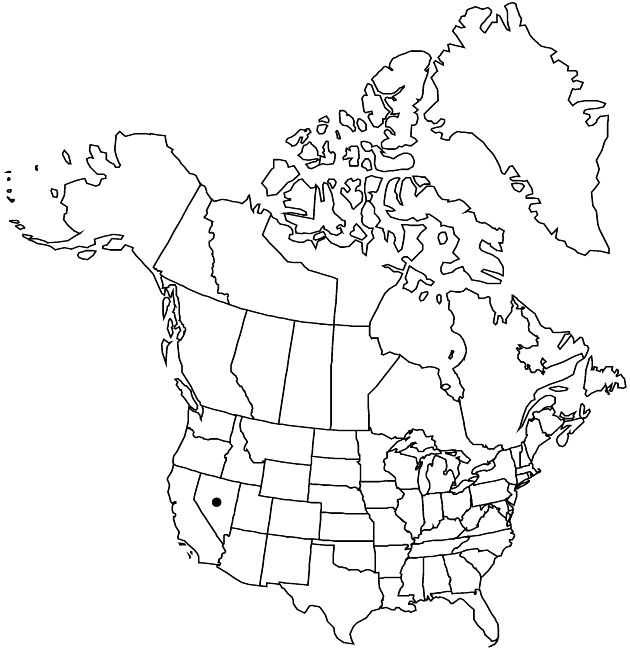Ionactis caelestis
Brittonia 44: 247. 1992.
Plants 12–25 cm (with multicipital crowns, not cespitose; taproots thick, woody). Stems strongly woody proximally, glandular. Leaves: proximal and mid separated by evident internodes; blades oblong-ovate, 4–6 mm, distal much reduced, margins green, faces hispidulous, sessile to stipitate-glandular. Heads borne singly or in loose, corymbiform arrays. Involucres 6.5–7 mm. Disc-florets functionally staminate (with sterile ovaries); corollas 4–4.5 mm. Cypselae 2.5–2.8 mm, faces eglandular. 2n = 18.
Phenology: Flowering Jun–Aug.
Habitat: Crevices of sparsely vegetated sandstone, areas of Pinus monophylla, Pinus ponderosa and Arctostaphylos pungens
Elevation: 2000–2100 m
Discussion
Of conservation concern.
Ionactis caelestis is known from a single population in the Red Rock Canyon National Conservation Area of the Spring Mountains, Clark County.
Selected References
None.
Lower Taxa
"[" is not declared as a valid unit of measurement for this property."]" is not declared as a valid unit of measurement for this property.
